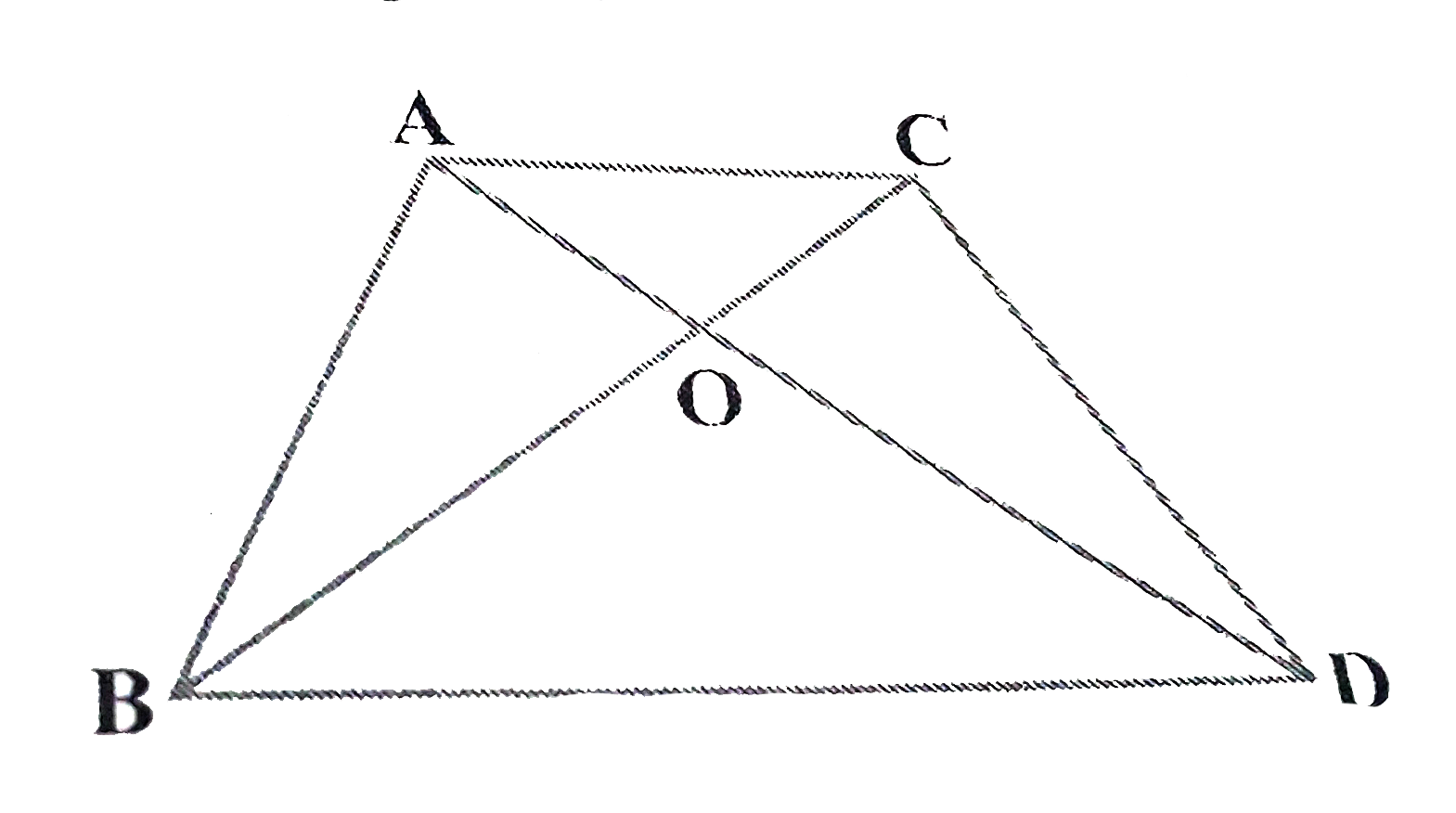Triangles ABC and DBC are on the same base BC with A, D on opposite side of line BC, such that ar(△ABC)=ar(△DBC). Show that BC bisects AD.
To prove that line segment BC bisects AD given that triangles ABC and DBC have equal areas, we can follow these steps:
1. Understanding the Given Information:
We have two triangles, ABC and DBC, which share the same base BC and are on opposite sides of the line BC. We are given that the area of triangle ABC is equal to the area of triangle DBC.
2. Using the Area Formula:
The area of a triangle can be expressed as:
Area=12×base×height
For triangles ABC and DBC, since they share the same base BC, we can denote the heights from points A and D to line BC as AE and DF respectively.
3. Setting Up the Equation:
Since the areas of the triangles are equal, we can write:
12×BC×AE=12×BC×DF
Simplifying this, we find:
AE=DF
This indicates that the heights from points A and D to line BC are equal.
4. Analyzing the Triangles:
Now, consider triangles AEO and DFO, where E and F are the feet of the perpendiculars from A and D to line BC respectively. We know:
- AE = DF (from step 3)
- Angle AEO = Angle DFO (vertically opposite angles)
- Angle AEO = Angle DFO = 90° (since they are heights)
5. Using the Criteria for Congruence:
By the Angle-Angle-Side (AAS) criterion of congruence, we can conclude that:
△AEO≅△DFO
This implies that corresponding sides are equal, so:
AO=DO
6. Conclusion:
Since AO = DO and E and F are the midpoints of AD, we can conclude that BC bisects AD. Therefore, we have shown that line segment BC bisects line segment AD.
Final Statement:
Hence, it is proved that BC bisects AD.
We have two triangles, ABC and DBC, which share the same base BC and are on opposite sides of the line BC. We are given that the area of triangle ABC is equal to the area of triangle DBC.
The area of a triangle can be expressed as:
Area=12×base×height
For triangles ABC and DBC, since they share the same base BC, we can denote the heights from points A and D to line BC as AE and DF respectively.
Since the areas of the triangles are equal, we can write:
12×BC×AE=12×BC×DF
Simplifying this, we find:
AE=DF
This indicates that the heights from points A and D to line BC are equal.
Now, consider triangles AEO and DFO, where E and F are the feet of the perpendiculars from A and D to line BC respectively. We know:
- AE = DF (from step 3)
- Angle AEO = Angle DFO (vertically opposite angles)
- Angle AEO = Angle DFO = 90° (since they are heights)
By the Angle-Angle-Side (AAS) criterion of congruence, we can conclude that:
△AEO≅△DFO
This implies that corresponding sides are equal, so:
AO=DO
Since AO = DO and E and F are the midpoints of AD, we can conclude that BC bisects AD. Therefore, we have shown that line segment BC bisects line segment AD.
Hence, it is proved that BC bisects AD.
Topper's Solved these Questions
Similar Questions
Triangles ABC and DBC are on the same base BC with A, D on opposite side of line BC, such that ar(⊥ABC)=ar(DBC). Show that BC bisects AD.
View SolutionIn a parallelogram ABCD,E,F are any two points on the sides AB and BC respectively. Show that ar(△ADF)=ar(△DCE).
View SolutionO is any point on the diagonal BD of the parallelogram ABCD. Prove that ar(△OAB)=ar(△OBC)
View SolutionIn figure, ABCD is a trapezium in which AB∣∣CD . Prove that: ar(△AOD)=ar(△BOC).
View SolutionDiagonals AC and BD of a trapezium ABCD with AB∣∣CD intersect each other at O. Prove that ar (△AOD)=ar(△BOC).
View SolutionDiagonals AC and BD of a quadrilateral ABCD intersect at O in such a way that ar(△AOD)=ar(△BOC) . Prove that ABCD is a trapezium.
View SolutionIn figure ABC and DBC are two triangles on the same base BC. If AD intersects BC at O, show that ar(ABC)ar(DBC)=AODO.

View SolutionIn Figure, △ABC and △DBC are on the same base BC . If AD and BC intersect at O , prove that Area (ABC)Area (DBC)=AODO.
View SolutionABCD is a trapezium with AB∣∣DC. A line parallel to AC intersects AB at X and BC at Y. Prove that ar(△ADX)=ar(△ACY).
View SolutionIn a △ ABC, If L and M are points on AB and AC respectively such that LM∣∣BC. Prove that: ar (△ LOB)=ar (△ MOC)
View Solution
